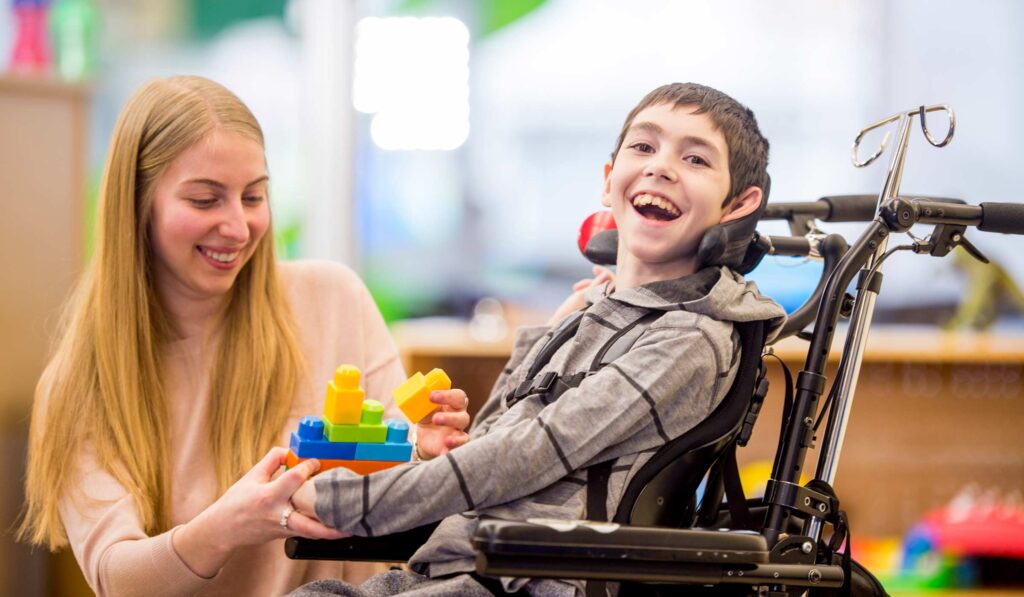A less invasive technique for combined dorsal and ventral rhizotomy to treat cerebral palsy patients who are severely affected by spasticity and dystonia in the legs (mixed hypertonia) is safe and effective, according to new research published in the Journal of Neurosurgery: Pediatrics. The evaluation of the procedure was led by Robert Naftel, M.D., a neurosurgeon at Monroe Carell Jr. Children’s Hospital at Vanderbilt.
Traditionally, a surgeon will perform a selective dorsal rhizotomy (SDR) on children who have spasticity in their legs but still have the potential to walk, Naftel explained. A traditional SDR can be a less-invasive, conus-level spine operation. For children with both spasticity and dystonia, there are a few surgeons who perform a more extensive rhizotomy that includes both the dorsal and the ventral nerve roots. This requires a large, multilevel exposure of the lumbar spine.
“Such a large surgery can be difficult for these children to overcome,” Naftel said. “The larger exposure has been necessary because it has been too difficult to access and identify the correct ventral roots through a smaller exposure.”
Improving Quality of Life for Children and Caregivers
Naftel’s team has developed a technique that allows the combined dorsal and ventral rhizotomy to be done through a conus-level laminectomy, which opens up a smaller portion of the spine. “This allows for an easier recovery for patients,” Naftel said.
While a traditional SDR aims to improve the efficiency with which a child walks, the combined dorsal and ventral rhizotomy is palliative. It is intended for children who will never be able to walk. Candidates suffer from severe muscle tightness in their legs that is not responding to other less invasive medical treatments.
“The muscle tightness can cause pain and lead to serious orthopedic deformities such as dislocations,” Naftel said. “It can also make it harder for those tending to the child to provide basic care such as diaper changes and baths. The operation can make life easier and more comfortable for the child and their family.”
Testing the Procedure
In 2019, Naftel and his colleagues performed the conus-level combined dorsal and ventral rhizotomy on seven patients at Vanderbilt who met the following criteria: having mixed hypertonia, having mainly lower extremity complaints, having failed on conservative medical therapy, and having failed while using an implanted pump that delivers baclofen directly to the spine or not being a candidate for such baclofen treatment.
Many of the patients had prior scoliosis surgeries and other operations, which complicated gaining access to the target areas in the spine. In their research, the team described techniques to overcome these obstacles through a more minimal exposure of the spine.
They found the combined dorsal and ventral approach provided definitive relief of hypertonia and was safe, with no infections, cerebrospinal fluid leaks, or neurogenic bladders occurring in their group of patients.
Filling an Underserved Need
Although various treatments are available to combat spasticity and dystonia in children with cerebral palsy, Naftel says many patients simply do not receive them. As a result, these children can develop deformities and later need extensive orthopaedic procedures.
Said Naftel, “We are happy to be able to provide the full spectrum of cerebral palsy care, including this new procedure for children who are more severely affected by mixed hypertonia.”






